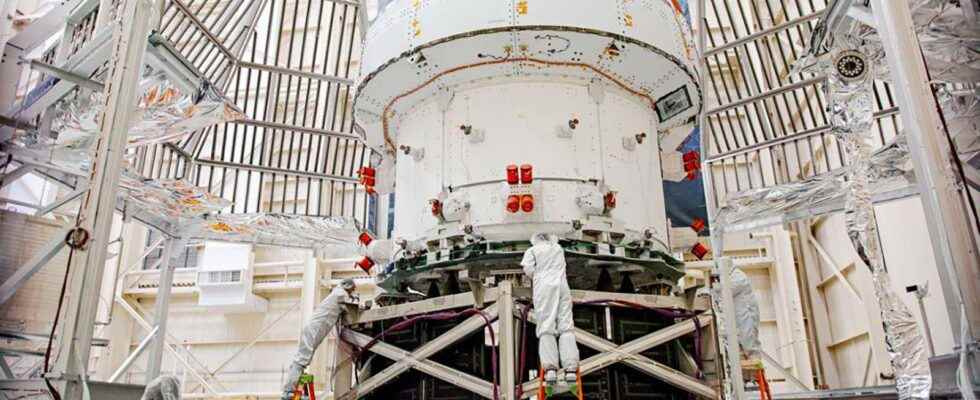For its trip around the Moon, NASA’s Artemis 1 mission will take on board Callisto, a tablet powered by Amazon’s assistant Alexa. Although its functionality will be limited, it will be the first virtual passenger of a space mission.
You will also be interested
[EN VIDÉO] Artemis: discover the Orion vehicle in video Video-animation of the first uninhabited mission of the Orion spacecraft. © ESA
In March, the spaceship Orion should take off towards the Moon as part of the Artemis 1 mission of the Nasa. This mission will mark the beginnings of Man’s return to the Moon. Artemis 1 will assess the capacities from Orion to carry out the mission and return to Earth from his orbit lunar. The cabin will be empty, there will only be a mannequin to simulate a astronaut and also a touchscreen tablet called Callisto. The latter is animated by an offline and adapted version. from Alexa, Amazon’s voice assistant. The video communication system is supported by the Cisco WebEx teleconferencing platform.
This full-scale test will ensure that Alexa’s behavior meets the objectives of future missions. But how did the giant Amazon manage to get its virtual assistant aboard the spacecraft? Thanks to an agreement between the builder of the Orion Lockheed Martin capsule and NASA. It was the aircraft manufacturer who decided on his own to develop a voice-activated assistant. To achieve this, he approached Amazon, and also Cisco. These are the two companies that financed the integration from Alexa in the mission. This partnership is also authorized by the agreement signed between Lockheed and NASA. The latter also benefits from the reimbursement of the resources that it has committed to help with this integration.
A lunar product placement!
Voice commands should allow astronauts to adjust cabin lighting, or to communicate with loved ones on Earth from the system developed by Cisco. At the moment, there are no plans to go much further than basic commands. However, the assistant will be able to access the data of telemetry and will be able to answer certain questions regarding the speed of displacement, for example.
We are therefore still a long way from embarking on Hal 9000 paranoid of 2001, a space odyssey. NASA has not yet approved the use of this tablet on future Artemis manned missions. For the moment, no astronaut has yet tested the process, even on the ground. Likewise, no one can say whether Cisco’s WebEx video system will be able to function once in orbit. lunar. In any case, whether the Callisto tablet project is operational or rejected by NASA, it will once again have given excellent visibility to a brand that does not necessarily need it.
Interested in what you just read?
.
fs1
